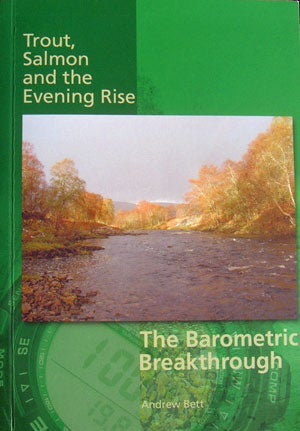Trout, Salmon and the Evening Rise, The Barometric Breakthrough | |
|
I came across this book via an article in Waterlog magazine and for a quite a while I’d wondered if barometric pressure could also play apart in my chub fishing? On FishingMagic there have been several threads on barometric pressure and I’ve also toyed with the idea of incorporating barometric readings into my catch records. During a ‘By the Riverside’ interview with Martin James he became aware of my interest and asked me to review the book even though it is predominately aimed at the salmon angler. I found the book easy to understand and had no difficulty in following Andrew’s logic to support his theory. Although I’ve not fished for salmon I have fly fished for and caught sea trout and wild brown trout in the rivers around Ingleton in the Yorkshire Dales, and I found his arguments very convincing. Andrew supports his theories with extracts taken from relevant scientific papers. The theory that salmon are caught predominantly on rising or steady pressure is very convincing and Andrew supports this theory by practical experiment, the results of which are beautifully tabulated and graphed. There are also plenty of comments and advice from lifelong experienced Scottish ghillies along with extracts form legendary authors and salmon anglers. I also learnt more about the anatomy of fish and how it was possible for them to detect very small variations in barometric pressure and that the swim bladders of fish may offer a device for detecting very small changes in barometric pressure. Andrew has explained the relationship between Barometric Pressure and aquatic life, ie, shrimp and krill in the Atlantic and shrimp, aquatic beetles and insect larvae in the river. He also explains how salmon and trout have learnt to associate this food source and its availability with increases in barometric pressure. The book also covers the theory of fly selection and hook patterns for different weather and water conditions, even as a non-salmon angler, I found this section of the book very interesting. There are excellent pictures of various fly patterns and of the aquatic life they are intended to imitate, the book is well populated with beautiful colour slides of those who angle for salmon as well as the countryside and rivers of Scotland.
|














